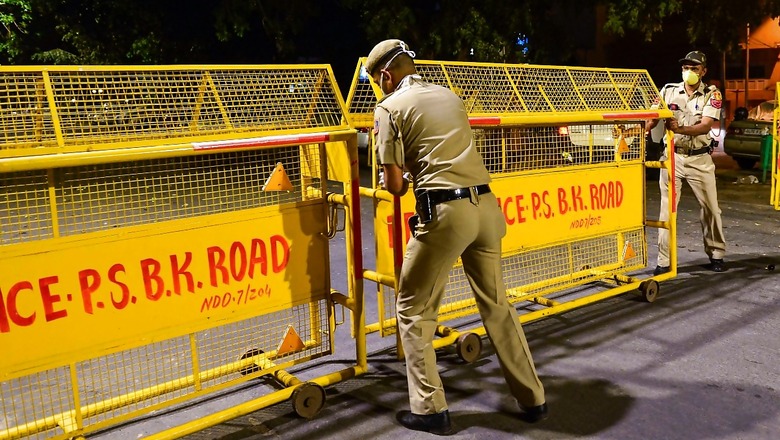
views
A team of Delhi Police has conducted a survey of the most burglary-prone zones and segregated the city into coloured zones according to their vulnerability to such crimes.
The survey found houses in areas such as Civil Lines, Greater Kailash, Hauz Khas or Lutyens’ Delhi are least prone to be burgled as compared to the other parts of Delhi. On the other hand, areas like Nihal Vihar, Samaipur Badli, Nangloi and Bawana have reported the most number of burglary incidents and thus, are the most susceptible to risk, a report in Hindustan Times said.
A team of officers from the Delhi Police crime branch conducted the survey in which 1,269 cases of burglary reported in the city till August 15 were analysed. The team segregated the city under 4 different coloured units, namely red, green, blue, and white zones, with white being the least vulnerable area and red the riskiest.
The survey has been described as a study into understanding patterns of burglaries, security lapses and an understanding into zone specific solutions that would help to reduce the number of crimes. The survey, which was discussed in a video-conference meeting also cited 3,026 cases of burglary reported in the city last year.
The report cited industrial belts of the city Nihal Vihar, Samaipur Badli, Nangloi and Bawana under the red zone that reported more than 20 burglary cases each this year.
Laxmi Nagar and Shakarpur in east Delhi, Tilak Nagar in the west and Shahdara in the north-east Delhi were sorted under the green zone that reported up to 19 cases each this year. Similarly, in the relatively safer blue zone, areas such as Paschim Vihar east in west Delhi and Neb Sarai in south made it with 11-15 cases each.
Civil Lines in north Delhi, New Friends Colony in south-east Delhi and Hauz Khas in south Delhi came under the least riskiest white zone, along with most police station areas in the Lutyens’ Delhi.
An officer from the meeting was quoted by HT as saying, “We have identified the problem areas. This was the first step. It was an extensive study of each case. We are speaking to market associations and residents groups to join hands with us and fix this problem using necessary steps.”
The officer added that police posts will be set up and patrolling increased in many of these areas. He said the residents have also agreed to help out with installing CCTV cameras.
The survey also made a study of the specific areas under the zones where the burglars struck and it showed that houses were the most vulnerable with 694 cases, followed by shops (273 cases), 71 offices and 66 factories, among other places categorized for the purpose of the study.
The city police will further analyse the pattern of cases being reported in the blue and green zones, the officer was quoted as saying and added that the focal point of their analysis would be to check small lanes which are without street lights or CCTV cameras.
A part of the study has revealed that other factors are also involved which determine the rise or fall in number of crimes in a particular area. Residential areas such as Greater Kailash or Civil Lines are relatively safer because resident welfare associations employ security and hi-end security measures which help in keeping a tab on the housing societies and thus reduce crimes, another officer was also quoted as saying.
In contrast, the officer added, industrial areas and markets are sparsely populated and thus more prone to criminal activity after shutting shops.




















Comments
0 comment